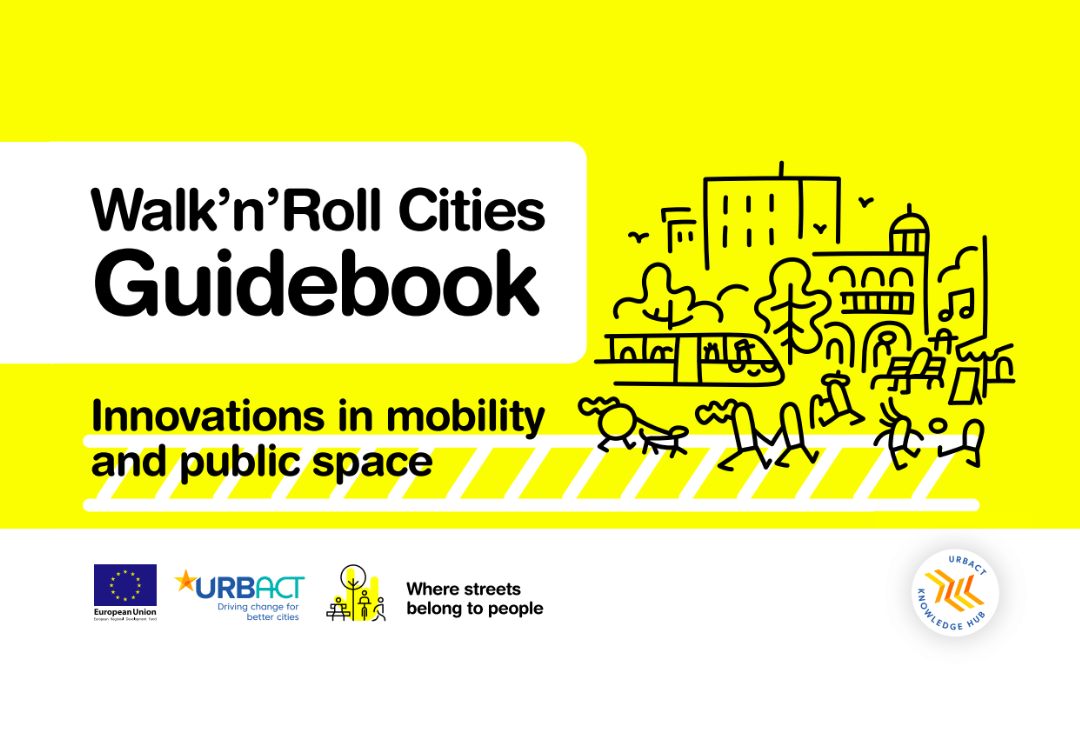Walk'n'Roll Cities publishes guidebook on mobility and public space
A useful guide for cities to implement sustainable mobility practices? We love to see it! Walk'n'Roll Cities, the union of three separate URBACT networks, published a guidebook supporting cities to meet the challenge of public space and mobility.
Walk'n'Roll Cities, an initiative composed of there URBACT Networks (RiConnect, ThrivingStreets, and Space4People) sought to understand how to change the mobility paradigm in Europe to create more inclusive spaces for all. This is mainly because cities are frequently built to accommodate cars, despite their size and population.
Working within the URBACT Knowledge Hub, these three networks composed of 28 cities of varying sizes came together to explore shared visions and actionable solutions through various workshops, events, and a series of guidelines, which they have now published in a useful guidebook.
Titled 'Innovations in mobility and public space', the document is an easy-to-read guide for city practitioners at both the public and private levels, discussing the challenge of public space and mobility in cities and presenting a systemic overview of innovative solutions and good practices, which were collected and further explored in the course of two webinars and a final conference in Barcelona, organised in 2022, as part of the Walk’n’Roll project.
The guidebook is composed of three booklets:
- Booklet 1, focusing on the WHY;
- Booklet 2, focusing on WHAT cities can do;
- Booklet 3, presenting HOW cities can make the transformation happen.
Click here to read the full guidebook.
About Walk'n'Roll Cities
28 European cities of different sizes, coming from 16 different countries have come together to face today’s mobility challenges. In the framework of three URBACT Action Planning Networks, the city partners from the RiConnect, Space4People and Thriving Streets networks decided to start a close cooperation. Their work focused on the reflection of how public space aspects can improve
urban sustainability and livability, on different spatial scales, from metropolitan areas down to neighbourhood and street level. Together, these cities explored visions and interventions that could contribute to a massive reduction of car use in our cities.
